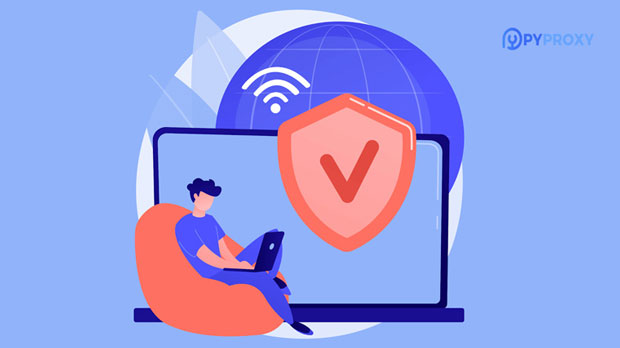Android socks5 proxies have gained significant popularity in the digital landscape due to their ability to handle data traffic with greater security, privacy, and flexibility. However, it’s important to understand how they differ from other types of proxies, such as HTTP and HTTPS proxies. Each type of proxy has its specific features, use cases, and limitations, depending on the needs of the user. In this article, we will explore the differences between Android SOCKS5 proxies and other types of proxies, focusing on key elements like speed, security, and compatibility, providing valuable insights for those seeking to optimize their online experience. Understanding Proxies: Basic DefinitionsBefore diving into the distinctions between SOCKS5 and other types of proxies, it’s essential to grasp what proxies are and their general purpose. A proxy server is an intermediary server that sits between a client and the destination server, handling data requests and responses. Proxies are commonly used to enhance security, bypass geographical restrictions, and improve network performance.There are several types of proxies, each designed for specific functions:1. HTTP Proxy: Designed primarily for web traffic, HTTP proxies are used to route requests made through HTTP (HyperText Transfer Protocol). These proxies are often used for simple web browsing tasks. 2. HTTPS Proxy: An extension of the HTTP proxy, HTTPS proxies handle secure (encrypted) traffic, allowing users to visit websites over a secure connection. This type of proxy supports SSL/TLS encryption, ensuring data privacy during browsing.3. SOCKS Proxy: Unlike HTTP proxies, SOCKS proxies work at a lower level of the network stack, allowing them to handle any kind of internet traffic, including HTTP, FTP, and more. SOCKS proxies are highly versatile and offer more flexibility compared to other proxies.Key Differences Between Android socks5 proxy and Other Types of ProxiesNow, let’s break down the differences between Android SOCKS5 proxies and other proxies in more detail.1. Compatibility and Protocol SupportOne of the main advantages of SOCKS5 proxies is their versatility in supporting various types of traffic. While HTTP and HTTPS proxies are specifically designed to handle web-based traffic, SOCKS5 proxies work across different protocols, such as HTTP, FTP, POP3, SMTP, and more. This makes SOCKS5 proxies ideal for users who need to route various kinds of traffic, beyond simple web browsing.For example, if you want to use a proxy for a torrent client or for an application that uses non-HTTP protocols, a SOCKS5 proxy will be the more suitable choice. On the other hand, HTTP and HTTPS proxies are only effective for web traffic, limiting their use to browsing or secure browsing, respectively.2. Security and Privacy FeaturesWhen comparing security and privacy, SOCKS5 proxies typically offer more robust performance than HTTP or HTTPS proxies. While HTTPS proxies do provide encryption, they only protect web traffic and are not designed to handle other types of data. SOCKS5 proxies, however, offer greater anonymity and flexibility.SOCKS5 proxies do not modify or rewrite the data packets, ensuring that they can route any type of traffic securely. They support both authentication and encryption features, making it harder for attackers to intercept or manipulate data. Moreover, SOCKS5 proxies don’t leak DNS requests, which can be a vulnerability in HTTP or HTTPS proxies.Another noteworthy feature of SOCKS5 is its ability to work without the need for IP address modification. While some proxies may hide the IP address of the client, SOCKS5 ensures that data is forwarded efficiently, with minimal impact on speed.3. Performance and SpeedPerformance is another area where SOCKS5 proxies shine, especially in comparison to HTTP and HTTPS proxies. Since SOCKS5 proxies don’t interfere with the data packets as much as other proxies, they are generally faster in routing traffic. HTTP and HTTPS proxies, in contrast, often have to rewrite or modify data packets, which can introduce latency and reduce speed.However, it's worth noting that performance can also depend on other factors such as the proxy server’s location, the quality of the internet connection, and the overall traffic load. That being said, SOCKS5 proxies are generally more efficient in handling high-bandwidth applications like gaming, streaming, or torrenting, as they are less prone to slowing down data transfer speeds.4. Bypassing Geo-Restrictions and CensorshipAnother significant advantage of using Android SOCKS5 proxies is their ability to bypass geographical restrictions and censorship. While HTTP and HTTPS proxies can also be used for bypassing geo-blocks, they are generally less effective for applications beyond browsing.SOCKS5 proxies, due to their ability to handle multiple types of traffic, allow users to access restricted content across different services, such as streaming platforms, games, and even VoIP services. This makes SOCKS5 proxies an excellent choice for users in regions with strict internet censorship or those who want to access content not available in their country.5. Setup and ConfigurationThe configuration process for SOCKS5 proxies can be slightly more complex compared to HTTP or HTTPS proxies. While HTTP proxies are simple to set up and use with most web browsers, SOCKS5 proxies require more detailed setup, especially on Android devices. Users may need to configure their applications or modify system-wide settings to ensure proper functionality.That said, once set up correctly, SOCKS5 proxies are highly efficient and do not require frequent adjustments, making them ideal for users who need a more stable and comprehensive proxy solution.6. Use Cases and ScenariosWhen considering which proxy to use, it’s essential to understand the different use cases and scenarios where each type excels. Below is a comparison:- HTTP Proxy: Best suited for simple web browsing tasks, such as hiding the user’s IP address or accessing websites that are otherwise blocked in certain regions.- HTTPS Proxy: Ideal for secure web browsing, where encryption is necessary to protect sensitive data, such as during online banking or when accessing private accounts.- SOCKS5 Proxy: The most versatile option, suitable for a wide range of tasks, from browsing to torrenting, gaming, and accessing a variety of applications. It is especially beneficial for users who need anonymity and security across various types of internet traffic.ConclusionIn summary, the Android SOCKS5 proxy stands out for its versatility, security, and performance, offering significant advantages over other types of proxies. While HTTP and HTTPS proxies serve their specific purposes—mainly for web browsing and secure browsing—SOCKS5 proxies are better suited for a wide variety of use cases, including high-bandwidth activities, bypassing geo-restrictions, and enhancing privacy.For users who require flexibility and high performance, especially in environments with high traffic or the need for multi-protocol support, SOCKS5 is a clear winner. However, for those seeking a more straightforward and simple setup, HTTP and HTTPS proxies may be more appropriate. Ultimately, the choice between these proxy types depends on the user’s specific needs and online activity requirements.
Dec 25, 2024
![arrow]()



















































